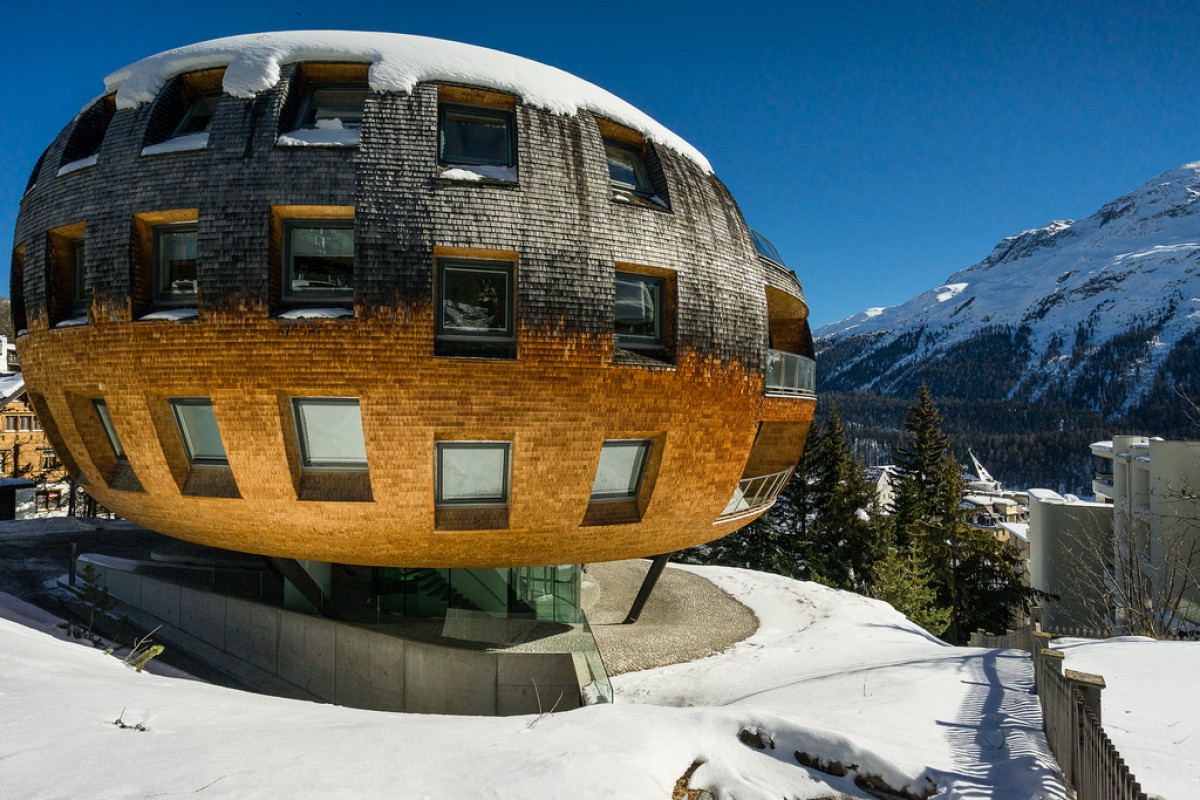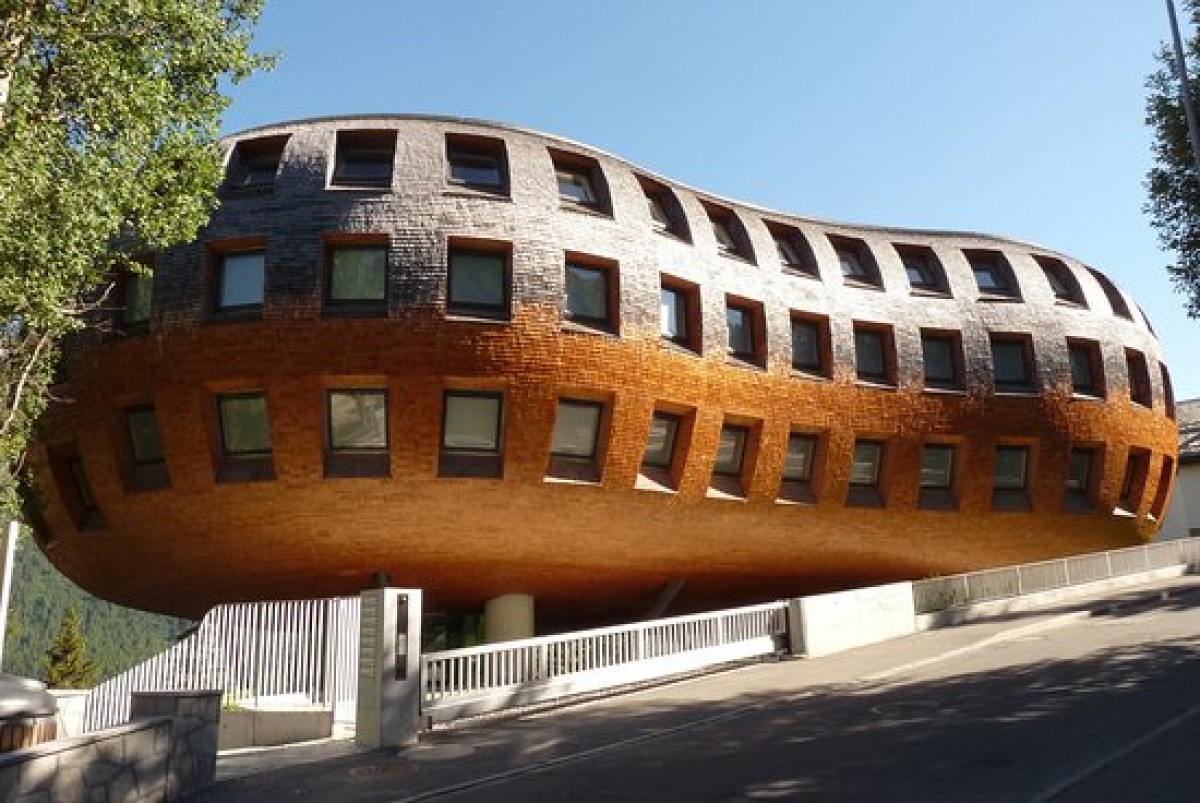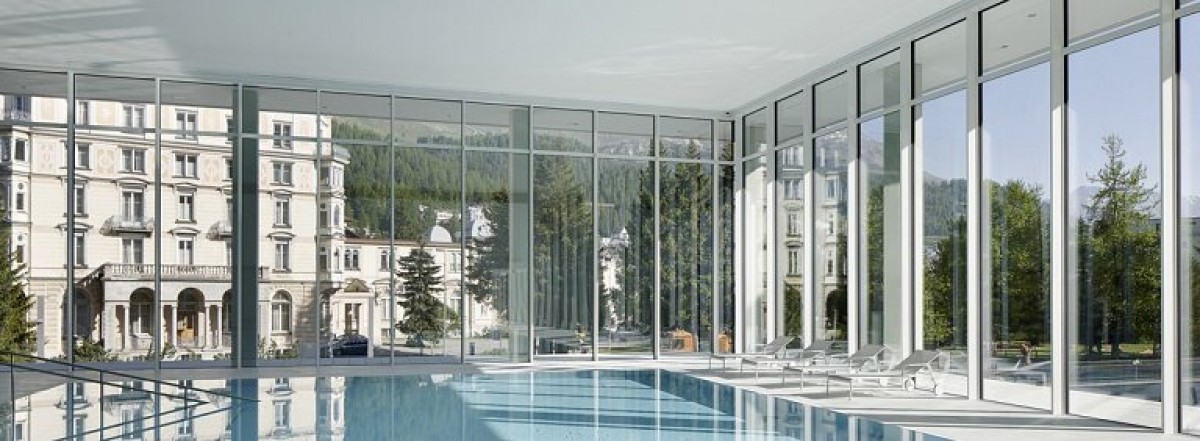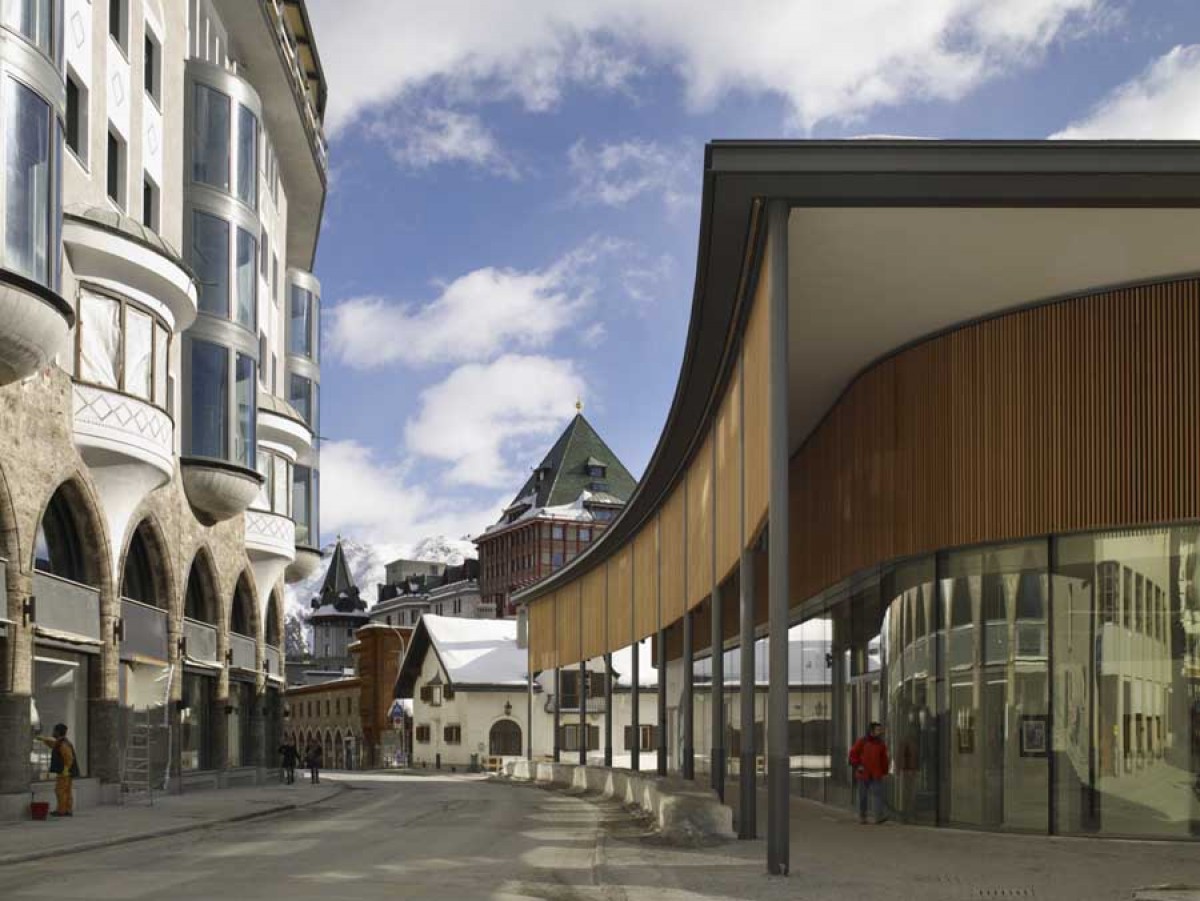





Located in the Swiss Alps, the famous mountain resort boasts some of the boldest architectural projects created by icons like Sir Norman Foster.
Once you enjoy the idyllic pastures, meadows and the Lake of St. Moritz, you will find that the star-studded town has more to enjoy than just its fantastic views. For years, the center of the Engadine Valley has been one of the hottest spots on the map during the winter season. On its splendid ski slopes and in the glamour of its iconic nightclubs one may meet many celebrities from around the world. And its not only the famous Hollywood faces and top models that St. Moritz manages to attract, but also a number of significant architects and designers who have left their mark on the image of the Swiss town. Sir Norman Foster is one of the city's greatest fans, but there are other world-class architectural talents that are worth mentioning too. Here are some of our favorites:
quattro BAR
This mountain-top bar is perched high above St. Moritz in Corviglia. Located at more than 8,000 feet, the exclusive space was built by Audi (the automotive company) as a marketing tool for the company’s Quattro all-wheel-drive system. Created as a modern interpretation of the traditional alpine ski lodge, Steiner Sarnen Schweiz AG designed the building,while the Munich’sSchmidhuber handled the interiors.
Chesa Futura
A bubble-like structure, taken from traditional Swiss houses, Chesa Futura is a building designed by Norman Foster that reflects the architectural features of the region. Regardless of its modern appearance, the building is lined with wood, which is one of the oldest building materials and has been elevated above the hill to prevent the buildup of snow on it. Chesa Futura, or the "house of the future" in the local Romansch, overlooks the lake below.
The Murezzan
Another project by Foster + Partners, which combines commercial with residential areas. After the restoration of the two existing buildings on the site - Albana Hotel (1907) and Posthotel (1908) - Foster + Partners created a new complex that still draws on traditional Alpine architecture. The architects used the original plans of the building to restore the original neo-Gothic windows and the proportions of space.
Ovaverva
This sprawling recreational complex combines wellness and gastronomy with outdoor activities and retail areas, all set into a beautiful package. Designed by Bearth & Deplazes and Morger + Dettli, the building was meant to be bright and welcoming, while blending seamlessly into the natural landscape of St. Moritz. The glass-fronted pool has a splendid view of the forest, and the fourth-floor relaxation rooms overlook the Kurpark Park and the Maloja Pass.
Kulm Country Club
It is known that the Pritzker Prize winning architect Norman Foster is a fan of St Moritz, but his latest project in the city was a true labor of love. Foster and his team undertook the total renovation of the 110-year-old Eispavillon in Kulm Park, part of the historic five-star Kulm Hotel. The Eispavilon was key in the Winter Olympics in 1928 and 1948 that were held in St. Moritz and reentered the spotlight in 2017 as the site of the 2017 World Ski Championship. Today, thanks to the ingenuity of Foster, Kulm Country Club visitors can dine on the sunny terrace of the stylish new restaurant while others enjoy the adjacent natural rink.
Parkhaus Serletta and St. Moritz Design Gallery
More than a parking space, Parkhaus Serletta in St. Moritz is also home to the city's design gallery. In more than 30 illuminated glass showcases, the works of various authors are arranged along the pedestrian corridor leading to Lake St. Moritz. The collection is open to the public 24 hours a day.
Olympic Stadium St. Moritz
When Rolf Sachs bought the St. Moritz Olympic Stadium, few know what was going to become of the famed building that had since fallen into despair. Using local pine and stone, the iconic furniture designer recovers it and turns it into his own holiday home. "I feel deeply connected with St. Moritz, I thought it was an iconic building that we absolutely had to preserve, so I thought to make a house out of it,”he says.